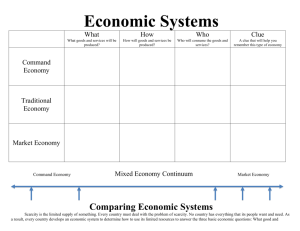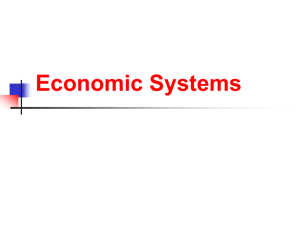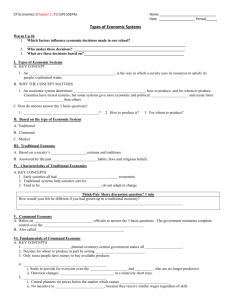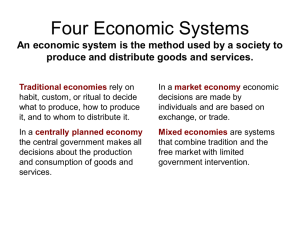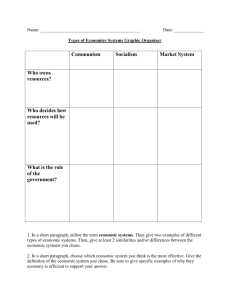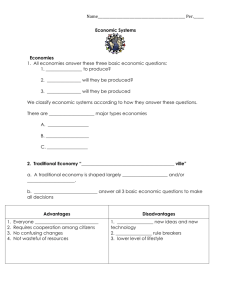Comparing Economic Systems: Traditional, Command, Market, Mixed
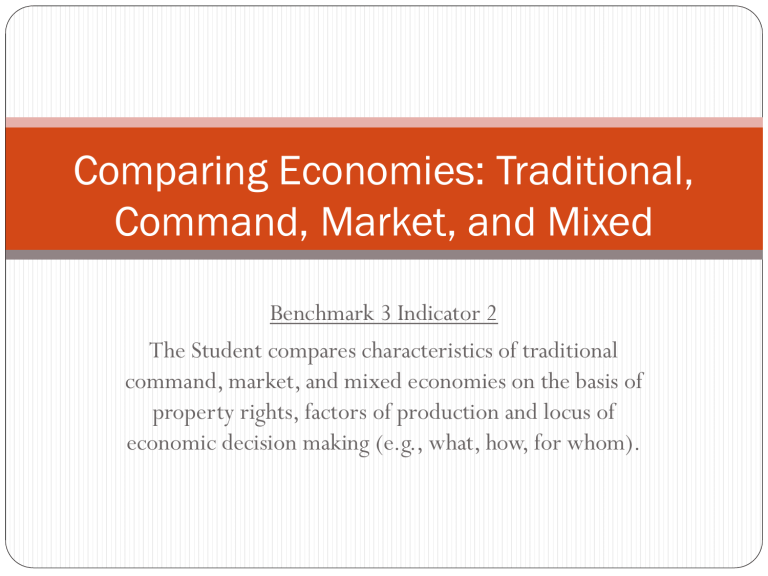
Comparing Economies: Traditional,
Command, Market, and Mixed
Benchmark 3 Indicator 2
The Student compares characteristics of traditional command, market, and mixed economies on the basis of property rights, factors of production and locus of economic decision making (e.g., what, how, for whom).
Traditional Economy
In an traditional economy individuals and tribes make the decisions.
Often these decisions are based on customs, traditions, and religious beliefs.
Traditional Economy
Goods are produced by hunting, fishing, gathering, and harvesting.
In a traditional economy everyone owns and uses the land together.
Traditional Economy
Examples of Traditional
Economies in history.
Native Americans
Tribes in Africa
Amish Community
Command Economy
In a command economy the government makes all the decisions.
Governments in a command economy are usually led by a dictator and/or are totalitarian governments.
Command Economy
In an command economy the government owns the major industries.
Because of this the government controls the quantity (amount) of goods produced and there prices.
The government also controls the wages of the workforce producing the goods.
Command Economy
Examples of command economies in history:
The Soviet Union under Joseph Stalin.
China under Mao
Zedong
Cuba under Fidel
Castro
Market Economy
In a market economy businesses make decisions based on consumer demands.
Consumers and supply and demand decide what should be made.
There is NO government involvement.
Lasssez-faire: government is “hands off ”
Market Economy
Businesses produce goods bases on consumer’s demands.
Supply and demand determines the price of goods.
In a market economy businesses are owned by individuals, entrepreneurs, and private businesses.
Market Economy
Examples of market economies in history:
England/Great Britain during the
Industrial Revolution.
The U.S. during the Industrial Revolution.
Mixed Economy
In a mixed economy decisions are made by business based on consumer demands.
However, the government also makes some decisions:
Regulates trade
Ensures safety of consumers
Protects the environment.
Mixed Economy
Businesses produce goods bases on consumer’s demands.
Supply and demand determines the price of goods.
In a market economy businesses are owned by individuals, entrepreneurs, and private businesses.
Mixed Economy
Examples of Mixed Economies in History:
The United States
Majority of today’s nations.

